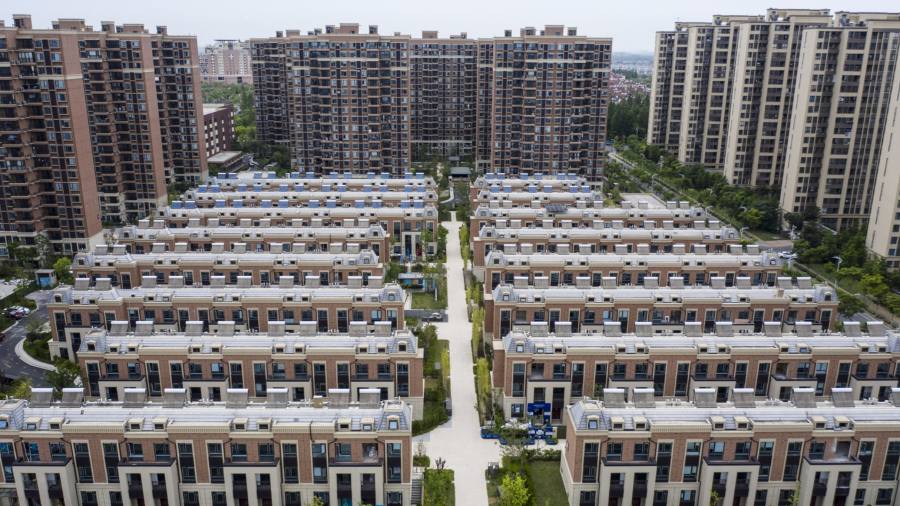Bonds issued by China’s highly-indebted actual estate builders have rebounded sharply about the previous two months, in a sign that initiatives by Chinese authorities to bolster the really hard-strike sector are bearing fruit.
China’s high-produce dollar bond index, which is dominated by the residence builders at the coronary heart of a sector meltdown more than the earlier two many years, has recovered practically 50 for every cent from the document small hit in early November. Bonds from greater-good quality developers these types of as Region Backyard have also recovered from distressed territory to trade shut to their initial value.
Overseas buyers, who stop the sector for developer bonds en masse in the course of a crackdown by Beijing on too much leverage in the sector, have tentatively begun to return, industry participants say.
“Over the previous few of months we have viewed relaxation [of lending restrictions], supportive policies from the Chinese authorities in direction of the actual estate sector, the opening up of the Chinese economic climate, and carrying out absent with zero-Covid,” stated a Hong Kong-dependent debt money marketplaces banker with a European financial institution. “All of these mixed have adjusted the [market’s] look at on China and also dramatically improved sentiment in direction of Chinese residence names.”
Bankers say that several bond traders keep on being wary, with a great deal of the acquiring being finished by hedge money and non-public banks. And the rebound in self confidence is much from common, as bonds from builders who have currently defaulted — these types of as China Evergrande, which has repeatedly skipped restructuring deadlines — have nonetheless shown minor to no decide-up.

Beijing in the latest weeks has backpedalled on its longstanding “three red lines” policy — targets for credit card debt, equity and property intended to limit leverage in the house sector, which experienced long served as a warning to banks against lending far too freely to developers.
But authorities’ technique to the sector was currently shifting in the remaining months of 2022, aiding assets corporations safe new funding. China’s 100 largest residence builders elevated far more than Rmb100bn from new loans, bonds, and equity — reflecting a 12 months-on-year jump of much more than a 3rd — with the bulk coming from domestic resources.
There are also tentative signs that the freeze in worldwide bond markets could be thawing a bit. Developer Dalian Wanda sold its to start with dollar bond in above a year earlier this thirty day period elevating $400mn to enable refinance some of its present debt load.
A banker on the offer explained it had drawn extra than $1.4bn of orders from buyers, but additional that even just two or 3 additional in the same way sized dollar bond product sales from builders this quarter “would be a very good outcome . . . because honestly, we really do not consider that a ton of them can appear [to market].”

The scale of the dilemma faced by each Beijing and China’s home teams remains stark. The latest data present housing product sales in the fourth quarter of 2022 fell more than 28 for every cent year on calendar year, marking the sixth straight quarter of declines.

It remains to be viewed regardless of whether Beijing’s attempts to jump-commence stalled progress projects across the country can take care of a crisis of self esteem between homebuyers no lengthier certain that payment for an beneath-construction device assures shipping of a completed condominium.
And even if there is a severe rebound in need, it will acquire time for worldwide investors’ urge for food for developer credit card debt to return in full. China Evergrande, in individual, continue to faces key hurdles to restructuring, which includes the latest departure of its auditor PwC around different sights on financial statements staying investigated by Hong Kong regulators.
“It will be yrs right until [foreign] traders are no extended worried about China’s property sector,” mentioned the head of institutional income for Asia at a single European loan provider.

